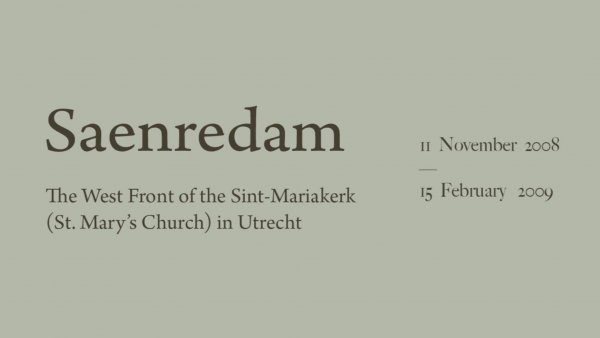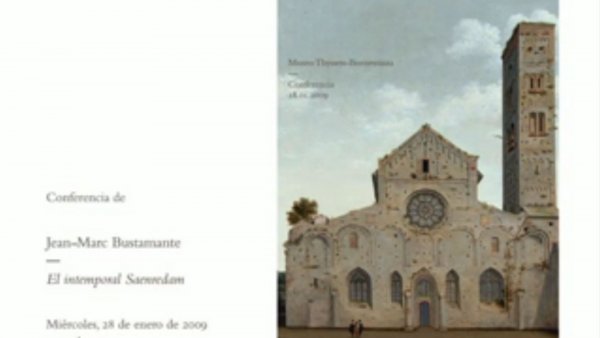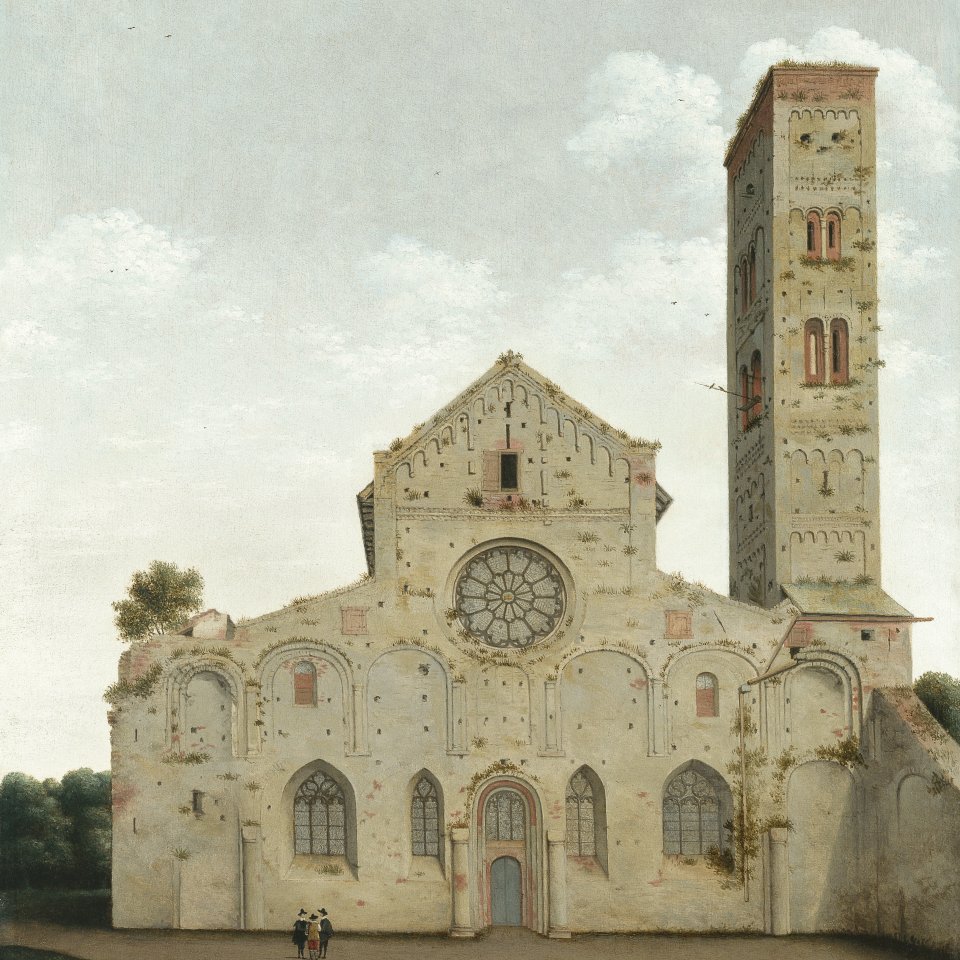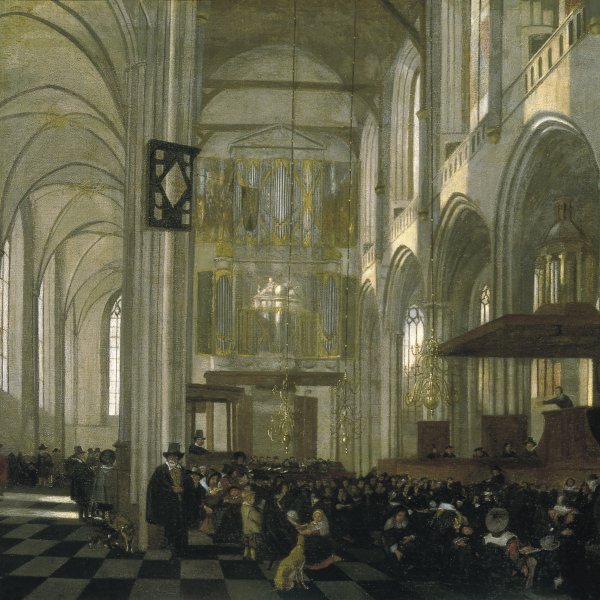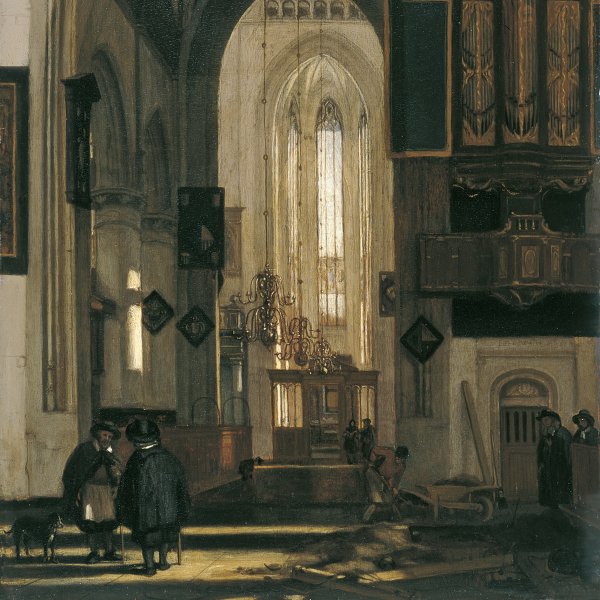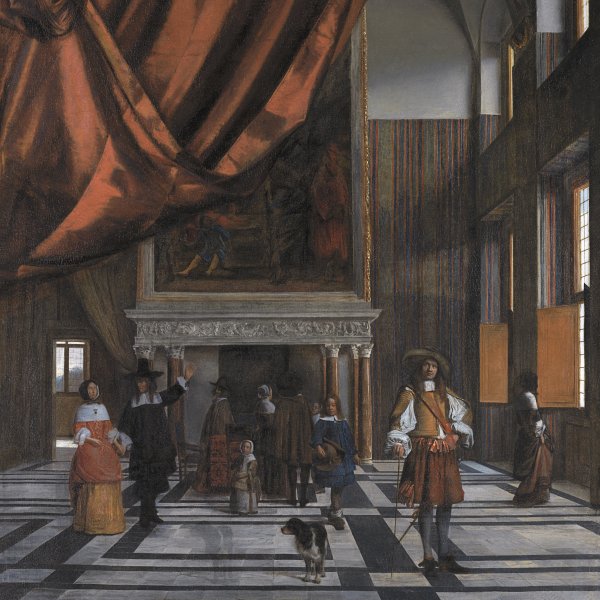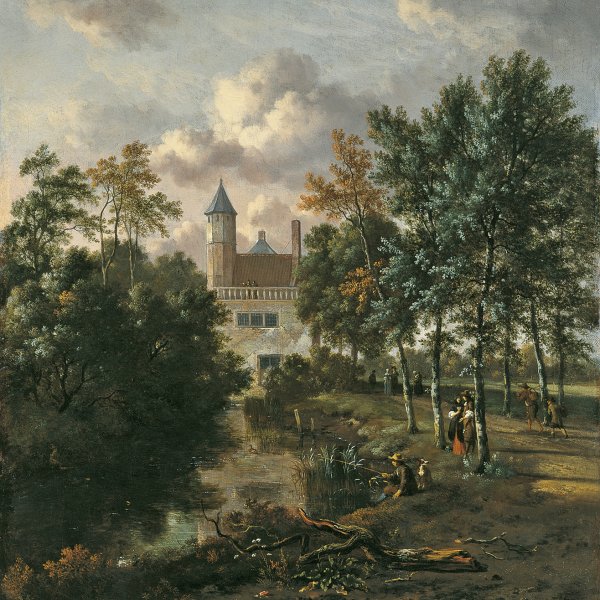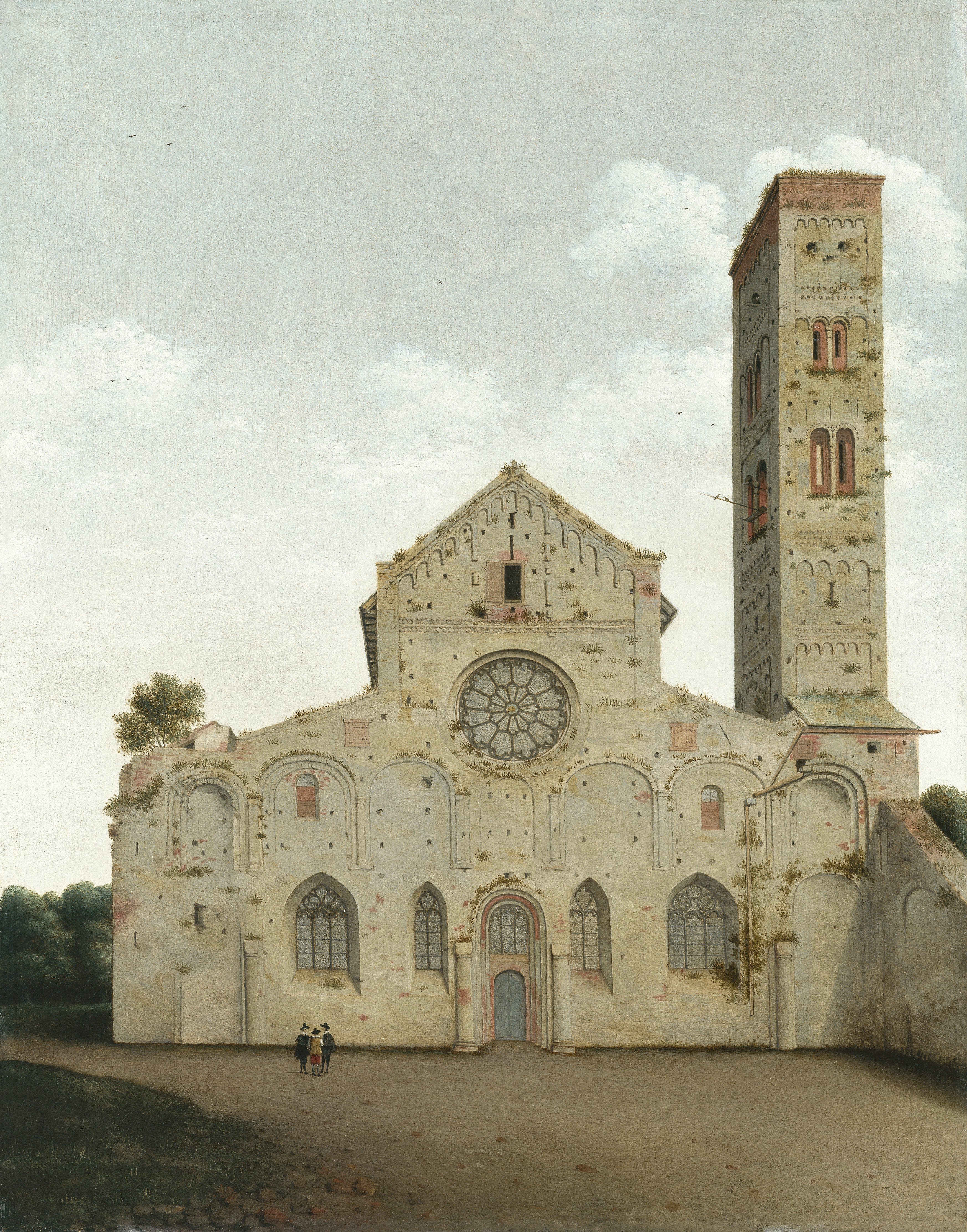The West Façade of the Church of Saint Mary in Utrecht
This superb panel is illustrative of the innovative approach adopted by the Dutch artist Pieter Jansz Saenredam, who was the first architecture painter to represent existing buildings using a peculiar new working method. First, he would take measurements and make sketches of buildings on site; these would then be used to produce detailed construction drawings in the studio. Finally, after several years, he would complete the oil paintings, transferring his delicate drawings to the appropriate support. In this way Saenredam sought to create impeccable portraits of buildings, though his quest for perfection occasionally led him to modify reality. The solid, monumental quality of his work is conveyed through simple, bright architectural settings and the use of a palette of pale colours for lighting purposes.
DD
Saenredam was the first major artist to depict such motifs in a rigorous and realistic manner, moving away from the imaginary architectural scenes that had been widespread in art in the second half of the 16th century and early years of the 17th century. Cornelis de Bie, who wrote the first biography of the artist published in 1662 (the year of the present painting), noted that around 1628 Saenredam decided to devote all his activities to this new genre and that his skills in such works would earn him the description of “the first architectural portraitist”. Saenredam was friends with two important architects who were also painters: Jacob van Campen, who designed the new Town Hall in Amsterdam, and Pieter Post.
The painting’s provenance is known from 1768 when it appeared on the art market in an auction in Haarlem. The canvas remained in Holland until 1928 when it was to be found on the UK art market and was included in an exhibition on Dutch art held in 1929 at the Royal Academy in London. In 1952 it was with the art dealer C. Duits. It was acquired in 1979 for the Thyssen-Bornemisza.
Saenredam was in Utrecht between June and October 1636. During his stay he made drawings of the interior and exterior of the Romanesque Mariakerk, as well as drawings of other churches such as the Buurkerk and the Jacobskerk in August and the Janskerk, the Cathedral and the Catharijnekerk between September and October.
The present panel depicts the Romanesque church of Saint Mary of Utrecht or the Mariakerk, which was demolished in the 19th century. There is a drawing by Saenredam of the church dated 30 August 1636 according to the inscription on the drawing, characteristic of the careful and detailed inscriptions and explanatory notes that the artist made on his preliminary sketches. The difference in date between the drawing and the painting was a normal practice with Saenredam, and he often stored away his detailed drawings made in situ until the moment arose to use them as starting point for paintings. Comparing the drawing, which is now in the Gemeentelijke Archiefdienst in Utrecht with the painting, we can see that the artist allowed himself some licence in the finished panel. He eliminated two ruined structures attached to the far ends of the façade and modified the dimensions of the rose window in the centre. He also added three small figures that function, as they do in other architectural paintings, to provide a sense of scale with regard to the building and to the spatial setting.
Saenredam painted another view of the Mariakerk, now in the Boijmans Van Beuningen Museum in Rotterdam. The latter is dated 1662, the same year as the present painting. In addition to the façade of the church it includes the adjacent square with its surrounding buildings. This square is omitted in the present work in which the presence of trees on either side of the building suggest that it is an isolated structure outside the city centre. There is a preparatory study for the Rotterdam painting, dated 18 September 1636, now in the Teylers Museum in Haarlem. Saenredam also painted a view of the choir and transept of the Mariakerk of 20 November 1659, whose preparatory drawing is dated 12 July 1636.
Mar Borobia
Emotions through art
This artwork is part of a study we conducted to analyze people's emotional responses when observing 125 pieces from the museum.

